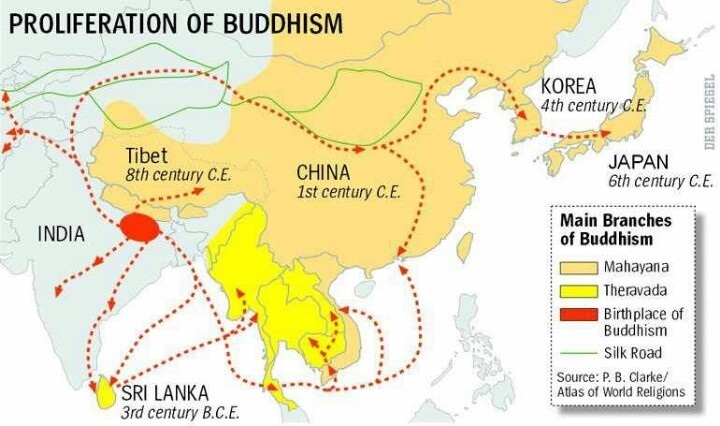

In view of that, ideas and worldviews in respect of religious traditions can be promoted and at the same time spread by the use of architecture, visual arts, and iconography down the Silk Road. This means that art utilize a language that can be understood by all people in the world and all cultures, as well. In the light of this point, it is necessary to note that the single most significant features of art and iconography that smooth the progress of its role in advancing various religious traditions, as well as religious global standpoint at the time is the piece of information that art is a worldwide language across all cultures and nations. Furthermore, the art plays another equally central role of acting as an agent, which facilitate for trans-continent switch over of religious traditions down the Silk Road.

The available art takes the form of design motifs, an art object, buildings or statues, and as such, the art and iconography play a significant role as a medium of cultural diffusion. 81).Īrt acts as a noteworthy agent concerning cultural diffusion all along the Silk Road. Whether there is a call for for religions to articulate its identity and faith through architecture and art, and at the same time, discuss the exceptional role that art provide in shaping a certain religious world standpoint (Foltz, 1999, p. Art and iconography are the two main forms that have played a noteworthy role in the transmission of religious traditions all along the Silk Road.įor that reason, in the following essay, an analysis and discussion will be sought on various questions such as rationale why, as well as how religions make use of material culture to support their basis. This broadcast/diffusion has not only made a considerable impact on the lives and cultures on particular countries within the continent but it has also left the citizens of those countries with an ocean of wonders in literature and art. In that same light, the Silk Road is regarded as the world’s oldest intercontinental routes that stretches and upholds a considerable number of religions, in particulars Buddhism all the way through Central Asia. In addition, to silk, the other significant feature is the Silk Road, which was also used to carry some other commodity, which form part of the significant world history. The silk trade came into operation at a time when China had the reign of Han dynasty. The origin of the name Silk Road is linked to the extensive trans-continental silk trade that takes place in China.


 0 kommentar(er)
0 kommentar(er)
